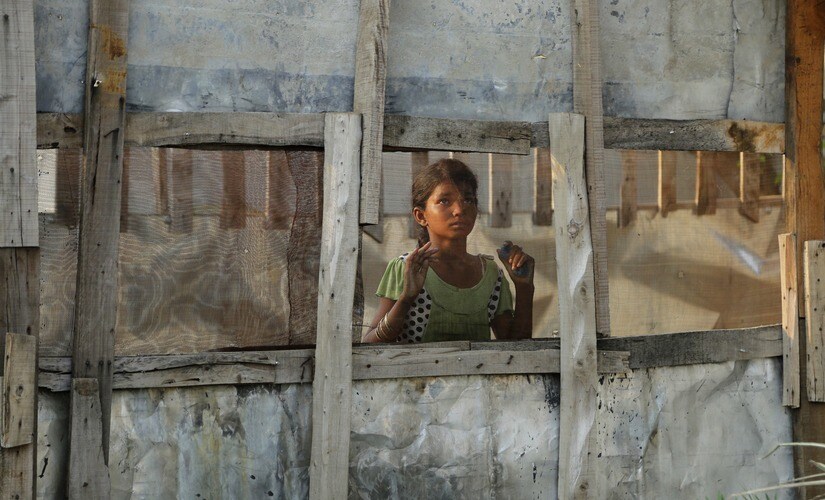Editor’s note: Over 40,000 Rohingya live in India as refugees. The Indian government has recently decided to deport them. In part one of a three-part series, Ajay Kumar examines the origins of these stateless people. Part two focusses on their connection with India and part three looks at the legal trouble India may face regarding their deportation. By the old Moulmein Pagoda, lookin’ lazy at the sea, There’s a Burma girl a-settin’, and I know she thinks o’ me; For the wind is in the palm-trees, and the temple-bells they say: “Come you back, you British soldier; come you back to Mandalay! Mandalay by Rudyard Kipling The opening lines of Kipling’s famous poem about life in British Burma paints a picture of a peaceful colony of Englishmen mixing freely with the local populace. But the reality was quite different. Unlike other parts of the British Empire, Burma had few British settlers. Burma, on the other hand, was faced with massive amounts of immigration from other parts of the British Empire, particularly India. The British administration of Burma began with the First Anglo-Burmese War (1824 - 1826). The war ended with the Treaty of Yandabo signed between the Kingdom of Ava and the British East India Company. The Burmese ceded Assam, Manipur, Arakan and parts of the Tenasserim coast to the East India Company. These newly acquired territories would become a part of the Bengal Presidency. The British would fight three more wars with the Burmese. In 1885, Burma became a province of British India and was made a major province in 1897. As Burma and India were part of the same country, there was a massive wave of migration from India to Burma. Up in the Arakan Mountains, much of this migration was plantation labour. The lives of many people are governed by events outside their wildest imaginations. For those living between British Bengal and British Burma, their futures were set in stone more than a million years ago: By plate tectonics. When the Indian Plate collided with the Eurasian Plate around fifty million years ago, it made a natural boundary between the subcontinent and the rest of Asia. This boundary is known to most of us in the Indian mainland as the Himalayas but in the western part of the subcontinent they are known as the Hindu-Kush and the Karakoram and on the eastern borders they are known as the Mizo Hills, the Chan hills that eventually lead all the way down the Burmese coast line as the Arakan Mountains. The Arakan Mountains is the natural boundary between the Indian subcontinent and Burma. This meant, that until modern times, it was quite difficult for people on one side of the mountain to get to the other side. That’s why people in the subcontinent speak Indo-Aryan languages and people up in China speak Sino-Tibetan languages. That’s also why our food, culture and writing systems are completely different. Crossing a mountain range is hard work and until recently (the 19th and 20th centuries), very few made the journey across. [caption id=“attachment_3955125” align=“aligncenter” width=“825”]  A Rohingya refugee girl looks through a mesh window at a camp set up for the refugees on the outskirts of Jammu, India. AP[/caption] There had always been some form of contact between the two sides of the mountain. Arakanese king Min Saw Mon fled to the Bengal Sultanate for 24 years and retook his kingdom with the help of the Sultan. For the assistance, he ceded some territory and became a vassal of the sultan, thus creating the first Muslim presence in the region. However, this was short lived as the king’s successor ended the vassalage. The Burmese kingdom reoccupied Arakan in 1785 and expelled the natives known as the Rakhine, many of whom fled to neighbouring British India. By the time the British entered Arakan, it was sparsely populated. When Burma was a part of the Bengal province and even later when it was part of British India, the border between the regions was porous. So there was an urgent need for cheap labour to harvest paddy grown in the Irrawaddy Delta. The East India Company’s solution was to import ethnic Bengali plantation labour from the neighbouring province of East Bengal, though this was a part of a broader phenomenon that was occurring all over the country. By 1927, Rangoon had overtaken New York City as the greatest immigration port of the world, witnessing over 480,000 arrivals out of a population of 1,300,000 that very year. In 1935, the Imperial Parliament passed the Government of India Act. The act comprised the Government of India Act and the Government of Burma Act. It split India and Burma into two separate entities within the British Empire but it did not clearly define the boundaries between British India and British Burma. The act defined Burma as: “Territories lying to the east of Bengal, the state of Manipur, Assam, and any tribal areas connected with Assam.” Consequently, it did not answer the question of Rohingya nationality. While the people of the empire were unified by their status as British subjects, India’s “first” partition led to the statelessness of a people called the Rohingya. It also resulted in a post-colonial independent India having some very curious residual obligations.
Editor’s note: Over 40,000 Rohingya live in India as refugees and the Indian government has recently decided to deport them. In a three-part series, Ajay Kumar will examine the origins of these stateless people. Part two will focus on their connection with India and part three will focus on troubles India may face regarding their deportation.
Advertisement
End of Article


)




